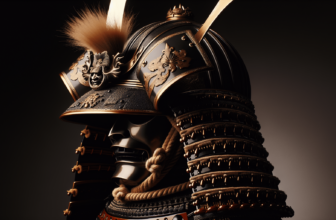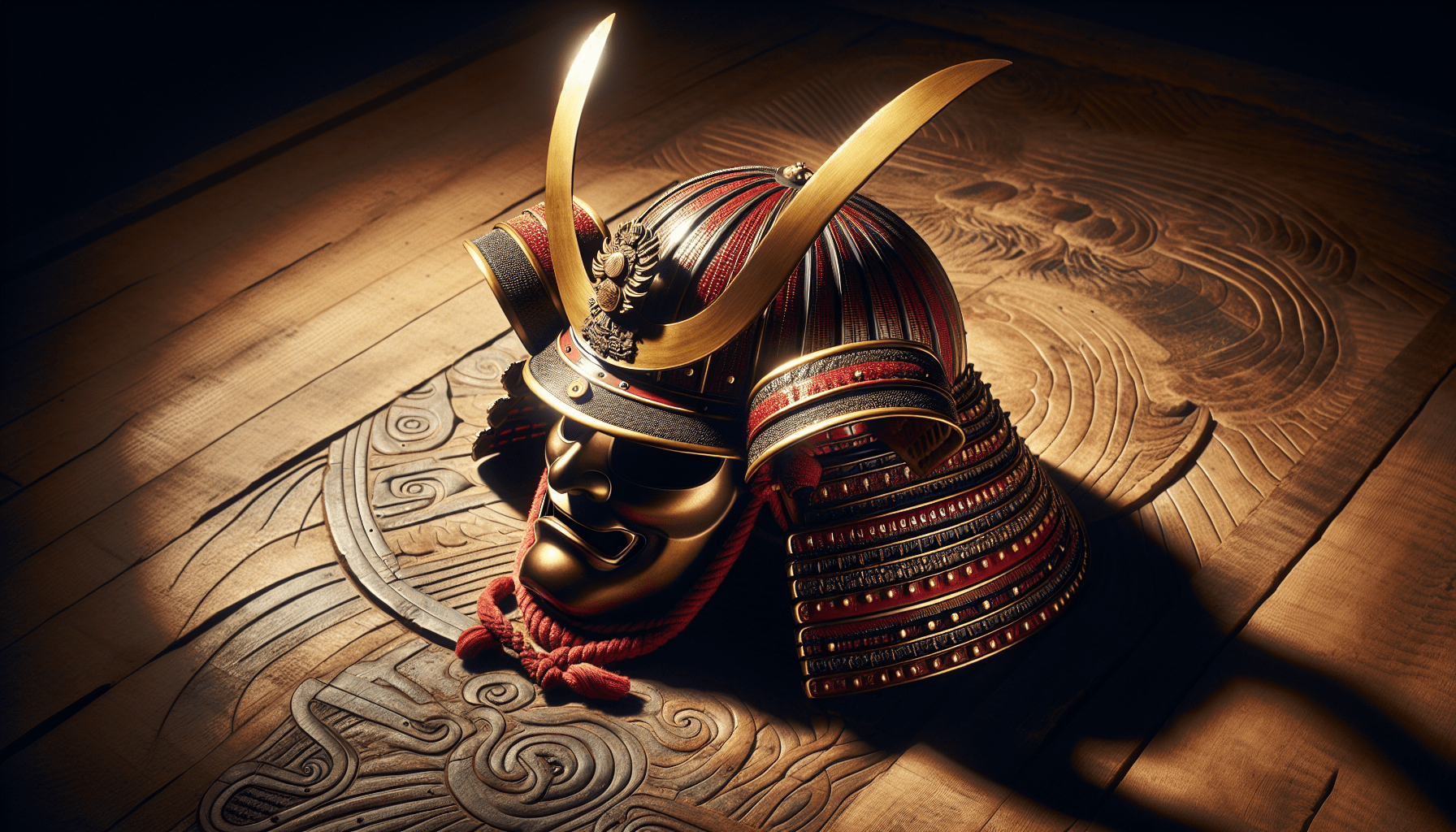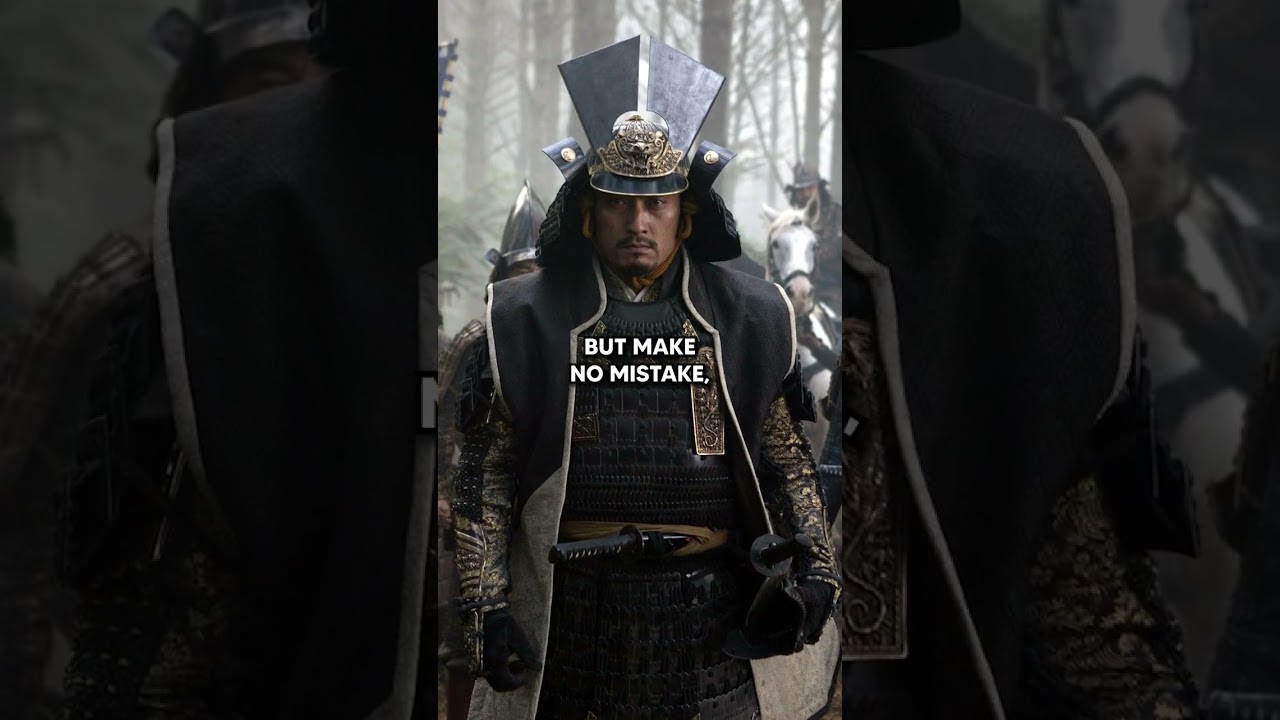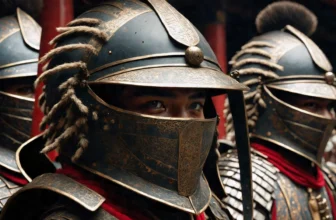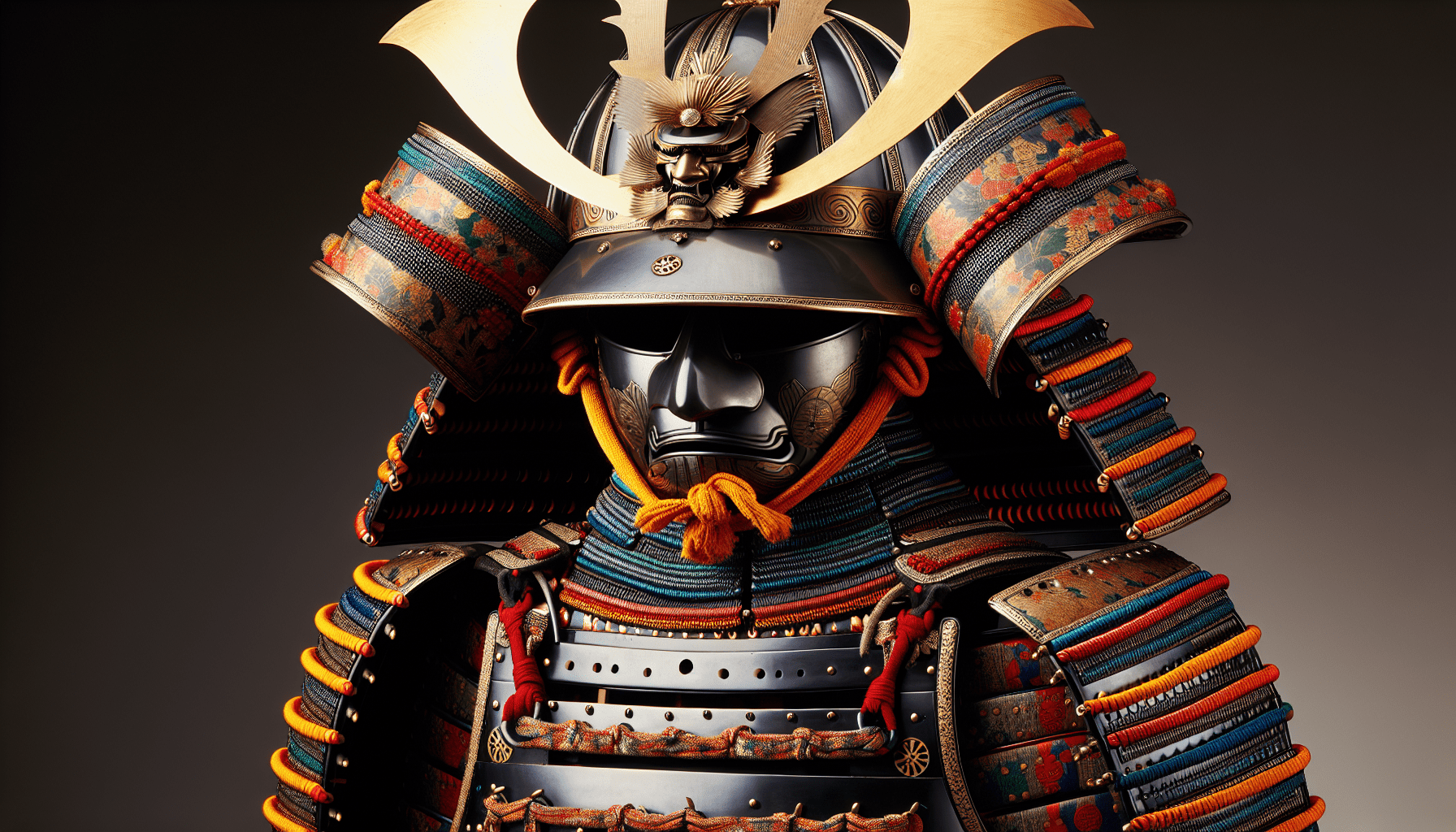
The evolution of samurai armor showcases a fascinating blend of functionality and artistry, reflecting the shifting tides of warfare and cultural influences in Japan. This exploration examines the progression from the early designs influenced by Chinese and Korean styles to the more refined and distinct samurai armor that emerged during Japan’s feudal era. Each component of the armor plays a significant role, providing insight into the skills and strategies employed by samurai warriors.
In addition to detailing the various armor types, the discussion extends to the historical context that shaped these designs, such as the impact of the Mongol invasions and the transition to hand-to-hand combat. The use of shields also finds its place, highlighting how their role changed over time with advancements in warfare technology. You’ll come away with a greater appreciation for the intricate craftsmanship and practical considerations that defined samurai armor through the ages.
Samurai Armor: Evolution and Overview
In this article, you’ll embark on a journey through the fascinating world of Samurai armor, exploring its historical context, key types, impacts of invasions, materials used, components, color variations, adaptations, and more. Along the way, you’ll discover how armor evolved alongside the samurai themselves, adapting to the needs of warfare and changes in society.
Historical Context
Influence of Chinese and Korean designs on early armor
The early armor of Japan bears a striking resemblance to its Chinese and Korean counterparts. The fundamental designs and principles were derived from the mainland, where various combat technologies were developed. You’ll notice that the early samurai adopted many components from these cultures, blending them with the unique needs of their own warriors. This intercultural exchange laid the groundwork for the distinctive armor traditions that would follow.
Appearance of the first real metal armor (Tonko) in the 4th century
The Tonko, identified as the first metal armor in Japan, made its debut in the 4th century. Made of iron plating, the Tonko was secured together using leather cords—a construction method known as lamellar armor. This armor represents a significant advancement in Japanese military technology, allowing for better protection compared to previous materials. However, while its durability was impressive, the bulkiness of the Tonko sometimes hindered mobility on the battlefield.
Characteristics of bulky lamellar construction in early designs
The early designs of samurai armor, such as the Tonko, featured a bulky lamellar construction. Each plate was carefully constructed and tied together, offering decent protection. However, the extra layers created an encumbering effect on mobility, especially during battles that required flexibility and speed. As warfare evolved, so did the need for lighter and more agile armor, leading to future innovations.
Key Armor Types
Keko: Flexibility for mounted combat
The Keko emerged as a popular form of armor, adapted primarily from Korean designs. Notable for its flexibility, the Keko consisted of smaller iron plates stitched together, allowing for greater movement, especially for mounted combatants. This design was well-suited for the samurai class, who often engaged in archery from horseback. With its combination of both protection and flexibility, the Keko represented a significant leap forward in armor technology, influencing future designs.
Oi Armor: Balancing flexibility and protection for samurai
Recognizable as one of the trademarks of samurai armor, the Oi Armor struck a balance between flexibility and protection. Featuring a more box-like design, it provided the wearer with excellent protection, especially for archers. The armor allowed for significant arm movement, crucial for drawing a bow while horseback. The lacquered metal strips formed a protective barrier without greatly sacrificing mobility, making it a favorite among warriors engaged in both ranged and close combat.
Dual Maru: Armor designed for foot soldiers and melee combat
The Dual Maru represented a shift towards armor designed for effectiveness in melee combat. Known as an armored jacket, it offered greater flexibility for foot soldiers who engaged in hand-to-hand combat. The design drew from existing armor but was tailored specifically to enhance the maneuverability of the wearer, allowing them to perform various combat techniques with ease.
Impact of Mongol Invasions
Adaptation in samurai warfare strategies
The Mongol invasions in the late 13th century had a profound impact on Japanese warfare and armor. These external pressures compelled samurai warriors to reevaluate their combat strategies and equipment. With the realization that traditional methods might not suffice against a more organized and disciplined foe, samurai began to innovate and adapt, which significantly influenced armor design and combat tactics.
Rise of foot soldiers (ashigaru) and their influence
During this time, foot soldiers known as ashigaru gained prominence. Previously considered lesser warriors, ashigaru became essential to the samurai’s military strategy. Initially outfitted with the Dual Maru, the evolving role of these foot soldiers shed light on their importance in securing victory. Their integration into military strategies altered the dynamics of warfare, prompting the development of new armor types for their protection.
Introduction of new armor designs such as Haramaki and Karate
The aftermath of the Mongol invasions saw the introduction of new armor styles, including Haramaki and Karate. These designs stepped away from traditional lamellar forms and incorporated larger, overlapping sections of metal. This shift made armor lighter and easier to produce, providing greater protection and becoming widely adopted by foot soldiers.
Materials and Innovations
Integration of chainmail (Kusari) for enhanced protection
One of the significant advancements in samurai armor was the integration of chainmail, known as Kusari. Initially used to fill gaps in armor, Kusari became a vital part of combat attire, as it helped protect vulnerable areas of the body. Over time, full suits made completely of Kusari emerged, offering a flexible yet resilient option for warriors in battle.
Transition to hybrid armor (Tose-goosoku) during the Warring States Period
As conflict escalated in Japan during the Warring States Period, the samurai began to adopt hybrid armor known as Tose-goosoku. This armor combined various materials and designs, creating a more functional suit suitable for the rigors of war. The hybridization of armor continued to improve usability and defense, becoming a staple during this tumultuous era.
Advancements in materials for improved usability and defense
Throughout the evolution of samurai armor, various materials were experimented with and refined to enhance usability and defense. The transition from heavy plates to lighter, more efficient designs demonstrated a growing understanding of the interplay between mobility and protection. As metallurgy advanced and resources became more accessible, armors saw significant improvements in weight and strength.
Armor Components
Detailed examination of the chest piece (Dō)
The core component of samurai armor is the chest piece, known as the Dō. This part has undergone numerous transformations over time. Traditionally made from a variety of materials, including iron and lacquered leather, the Dō serves to protect vital organs. Its design is crucial as it not only offers defense but also reflects the status and style of the wearer.
Functionality of the helmet (Kabuto) and face mask (Mune-shiri)
Another vital component of samurai armor is the Kabuto, or helmet. Not just a protective piece, the Kabuto often featured elaborate designs and ornaments showcasing a samurai’s rank and personal achievements. Alongside the Kabuto is the Mune-shiri (face mask), which provides facial protection while adding an intimidating aesthetic. This combination served to protect while also instilling fear in opponents.
Overview of shoulder plates (Sode), gloves (Kote), and waist armor (Obi)
The Sode (shoulder plates), Kote (gloves), and Obi (waist armor) are integral parts of samurai armor. The Sode shields the shoulders from attacks, while the Kote protects the arms, often supplemented with chainmail for extra defense. The Obi is crucial for securing weapons and other components, ensuring that the samurai remains agile in battle without sacrificing safety.
Importance of thigh guards (Haidate) and shin guards (Suneate)
The Haidate (thigh guards) and Suneate (shin guards) are essential for protecting the legs during combat. The Haidate typically appeared as a skirt-like protection made of metal plates, while the Suneate featured vertical plates that could absorb strikes and prevent injury. As battles became more intense, the development of these components was crucial in ensuring that samurai could withstand physical confrontations.
Armor Color Variations
Significance of colors associated with individuals and families
Contrary to popular portrayals, samurai armor was not a monolithic hue tied solely to clans. Instead, the color of armor reflected personal preferences, family lineage, and social status. Each warrior might choose colors that resonated with their identity, which introduced a wide variety of shades and styles across the landscape of samurai attire.
Examples of unique colors like red armor for elite groups
Among the notable color variations, red armor stands out as a symbol of elite status within samurai ranks. Such colors were often reserved for high-ranking warriors or specific groups, signifying prestige and prowess in battle. For instance, famous figures like Ii Naomasa were known for their striking red armor, enhancing their visibility and intimidation on the battlefield.
Cultural implications of armor color in samurai hierarchy
The cultural implications of armor color also played a role in the samurai hierarchy. Colors not only represented individual identity but also indicated rank within the broader social class system. This nuanced understanding of color in armor aided warriors in recognizing allies from enemies, making it a vital aspect of samurai culture.
Adaptations to Firearms
Necessity for stronger armor due to the introduction of firearms
As firearms began to make their way into warfare during the Sengoku period, the samurai were compelled to adapt their armor. The effectiveness of bullets necessitated the development of stronger and more resilient materials that could withstand the damaging effects of gunfire. This marked a major turning point in the evolution of samurai armor, leading to innovative designs.
Development of Tameshigo-soku armor from heavier materials
The introduction of firearms led to the creation of Tameshigo-soku armor, constructed from heavier materials than its predecessors. This armor aimed to protect samurai from the new threat that gunfire posed, reflecting the jersey’s ongoing evolution. Increased weights were balanced with new techniques that allowed for fatalities to be challenged, contributing to the continued effectiveness of the samurai in battle.
Impact of firearms on armor design and samurai tactics
The presence of firearms changed both armor design and samurai tactics significantly. Armor had to be reinforced and redesigned to account for higher velocity projectiles, forcing the samurai to rethink their usual strategies in combat. The need for increased mobility and survivability led to adaptations that would prove essential in maintaining their prominence on the battlefield.
Shields in Samurai Warfare
Complex history of shield usage among early warriors
While the samurai are primarily associated with katanas and armor, the use of shields among early warriors was indeed a part of Japan’s military history. Functioning as defensive barriers, these shields evolved in variety and size but were largely phased out as combat ranged more towards melee with armor becoming more sophisticated.
Role of shields in foot soldier formations versus mounted archers
Shields were more commonly utilized in foot soldier formations, where they provided crucial protection during ground combat. They were especially valuable for infantry, who often faced overwhelming odds. However, mounted archers, including many samurai, rarely used shields as they relied on speed and mobility, focusing instead on offense and evasion.
Decline of shields with the rise of firearms and larger defensive strategies
As firearms gained prominence on the battlefield, the utility of shields decreased significantly. The evolution of larger defensive strategies that focused on formations, natural cover, and powerful offenses led to a decline in shield usage. The adaptability of armor to counter projectiles became more critical than the reliance on shields, marking a shift in samurai warfare.
Notable Works Supporting Armor Evolution
Influence of ‘Samurai Battles’ by Michael Sharp
Michael Sharp’s “Samurai Battles” offers keen insights into the historical context of samurai warfare and armor. By emphasizing the evolution of techniques and designs, Sharp enhances your understanding of how armor was central to the samurai identity and military functionalities.
Insights from ‘Samurai: The Way of the Warrior’ by Stephen Turnbull
Stephen Turnbull’s “Samurai: The Way of the Warrior” further details the interplay between samurai culture and their armor. This work captures the essence of what it meant to be a samurai—particularly how their armor reflected their values, strategic preferences, and social status.
Reference to ‘The Samurai Warrior’ by Ben Hubbard and others
Ben Hubbard’s “The Samurai Warrior” serves as another cornerstone in understanding the elaborate designs and components of samurai armor. His work delves into the intricacies of armor construction and the significance it held in the life of a samurai, covering everything from aesthetics to practicality.
Call to Action
If you’ve enjoyed diving into the fascinating evolution of samurai armor, why not show your support? Like and subscribe for more engaging content that explores the rich tapestry of samurai history and its significant influences on Japan! Remember to turn on notifications so you never miss an update.
Join the conversation on social media! Engage with enthusiasts and history buffs on platforms like Facebook and Twitter to share your thoughts using the hashtags #Samurai #Japan #History.
Thank you for lodging yourself in the historical narrative of samurai armor—there’s much more to explore, and your journey is just beginning!



